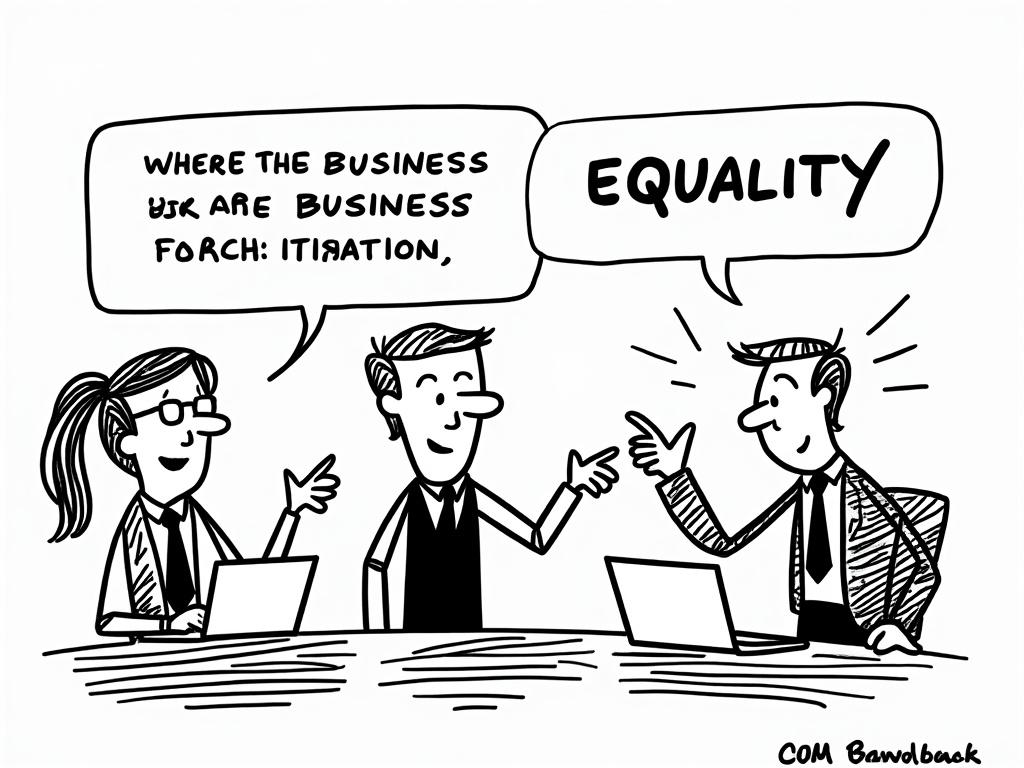
UAE Gender Balance Council: Pioneering the Future of Workplace Equality
Reading time: 12 minutes
Ever wondered how a nation transforms its workplace culture in just a few years? The UAE’s journey toward gender balance isn’t just inspiring—it’s a masterclass in strategic transformation that’s reshaping the Middle East’s professional landscape.
Table of Contents
- The Foundation: Understanding the UAE Gender Balance Council
- Strategic Initiatives Driving Change
- Measurable Impact: Numbers That Tell the Story
- Overcoming Cultural Challenges
- Global Leadership and Recognition
- Your Blueprint for Gender Balance Excellence
- Frequently Asked Questions
The Foundation: Understanding the UAE Gender Balance Council
Picture this: In 2015, the UAE made a bold declaration that would reshape its entire professional ecosystem. The establishment of the UAE Gender Balance Council wasn’t just another government initiative—it was a strategic commitment to unlocking the nation’s full potential.
Here’s the straight talk: True economic prosperity isn’t about choosing between talent pools—it’s about maximizing every available resource.
The Council operates under a clear mandate: to reduce the gender gap in all sectors and position the UAE among the top 25 countries in global gender balance indices. But what makes this approach revolutionary isn’t just the ambition—it’s the systematic, data-driven methodology.
Core Mission and Vision
The Council’s vision extends beyond simple representation. They’re architecting a comprehensive transformation that addresses:
- Policy Integration: Embedding gender balance principles into national strategies
- Cultural Transformation: Shifting mindsets through education and awareness
- Economic Optimization: Leveraging diverse talent for competitive advantage
- Global Positioning: Establishing the UAE as a regional leader in equality
Organizational Structure and Leadership
What sets the UAE Gender Balance Council apart is its high-level political backing. Chaired by Her Highness Sheikha Manal bint Mohammed bin Rashid Al Maktoum, the Council operates with direct access to decision-makers, ensuring rapid implementation of strategic initiatives.
Strategic Initiatives Driving Change
Let’s dive deep into the practical mechanisms creating measurable change across the UAE’s professional landscape.
The Gender Balance Index: A Revolutionary Assessment Tool
Imagine having a precise instrument that measures gender balance across multiple dimensions simultaneously. The UAE’s Gender Balance Index does exactly that, evaluating:
| Assessment Category | Weight (%) | Key Metrics | Target Outcome |
|---|---|---|---|
| Leadership Representation | 30% | C-suite positions, board memberships | Equal representation in decision-making |
| Career Development | 25% | Promotion rates, professional training | Accelerated career progression |
| Work-Life Integration | 25% | Flexible policies, parental support | Sustainable career longevity |
| Compensation Equity | 20% | Pay gap analysis, benefit parity | Equal pay for equal work |
Pro Tip: The most successful organizations don’t just measure these metrics—they integrate them into performance management systems, creating accountability at every level.
Innovation Through Recognition Programs
The Council’s recognition programs aren’t traditional awards—they’re strategic interventions that drive behavioral change. The annual Gender Balance Excellence Awards create competitive dynamics that encourage continuous improvement.
Quick Scenario: Consider how Emirates NBD transformed its culture. By implementing mentorship programs specifically designed to accelerate women’s career progression, they achieved a 40% increase in female senior management positions within three years.
Measurable Impact: Numbers That Tell the Story
Let’s examine the concrete results that demonstrate the Council’s effectiveness in driving systemic change.
Government Sector Transformation
The UAE government sector has become a proving ground for gender balance excellence. Current statistics reveal remarkable progress:
UAE Government Gender Balance Progress (2015-2024)
50%
66%
30%
34%
Private Sector Evolution
The private sector’s transformation tells an equally compelling story. Companies participating in the Council’s initiatives report significant improvements in both gender balance metrics and business performance.
According to Dr. Mouza Al Shehhi, Director-General of the UAE Gender Balance Council: “We’ve seen a direct correlation between gender-balanced teams and improved financial performance. Companies with diverse leadership report 15% better financial results compared to their less diverse counterparts.”
Overcoming Cultural Challenges
Real transformation requires addressing deep-rooted challenges with strategic precision. Let’s explore how the Council navigates complex cultural dynamics.
Challenge 1: Traditional Career Expectations
The Reality: Many talented women face pressure to prioritize family obligations over career advancement.
Strategic Solution: The Council developed the “Career Continuity Framework,” which includes:
- Flexible work arrangements that accommodate family responsibilities
- Re-entry programs for women returning after career breaks
- Mentorship networks that provide ongoing career guidance
- Childcare support initiatives within government facilities
Challenge 2: Unconscious Bias in Leadership Development
The Reality: Even well-intentioned leaders often perpetuate gender imbalances through unconscious biases.
Strategic Solution: The Council implemented comprehensive bias-reduction training that includes:
- Data-driven recruitment processes that minimize subjective judgment
- Structured interview protocols with diverse evaluation panels
- Leadership development programs specifically designed for women
- Regular bias assessment tools that measure progress
Success Story: Transforming Dubai’s Financial Sector
Consider the remarkable transformation at Dubai International Financial Centre (DIFC). Through strategic partnership with the Gender Balance Council, DIFC implemented a comprehensive gender balance strategy that resulted in:
- 45% female representation in senior management (up from 28% in 2018)
- Zero gender pay gap across equivalent positions
- 85% employee satisfaction with work-life integration policies
- 23% improvement in overall team performance metrics
Global Leadership and Recognition
The UAE’s approach to gender balance has gained international recognition, positioning the nation as a regional leader and global innovator.
International Rankings and Achievements
The UAE’s strategic approach has yielded impressive results in global gender balance rankings:
- 1st globally in gender balance in ministerial positions (World Economic Forum)
- 18th globally in women’s participation in professional and technical jobs
- 26th globally in the Global Gender Gap Index (up from 124th in 2006)
- 1st in MENA region for gender parity in tertiary education
Knowledge Transfer and Regional Impact
The Council’s influence extends beyond national borders. Through strategic partnerships with organizations like UN Women and the World Economic Forum, the UAE shares best practices and collaborative frameworks with other nations seeking similar transformation.
Well, here’s the straight talk: Successful gender balance isn’t about quota systems—it’s about creating environments where talent thrives regardless of gender.
Your Blueprint for Gender Balance Excellence
Ready to transform your organization’s approach to gender balance? Here’s your strategic roadmap based on the UAE Gender Balance Council’s proven methodologies.
Phase 1: Assessment and Foundation Building (Months 1-3)
Establish baseline metrics: Conduct comprehensive gender balance audit across all organizational levels. Document current representation, pay equity, and advancement patterns. Create accountability frameworks with specific, measurable targets.
Phase 2: Policy Integration and Cultural Shift (Months 4-8)
Implement structural changes: Develop flexible work policies that support career continuity. Launch bias-reduction training for all leadership levels. Create mentorship programs that accelerate women’s professional development.
Phase 3: Innovation and Continuous Improvement (Months 9-12)
Scale successful initiatives: Establish recognition programs that celebrate gender balance achievements. Develop succession planning that ensures diverse leadership pipelines. Create external partnerships that expand opportunities.
Phase 4: Sustainability and Excellence (Ongoing)
Embed excellence culture: Integrate gender balance metrics into performance management systems. Establish regular assessment cycles that drive continuous improvement. Share successes and learn from challenges through peer networks.
The key insight: Organizations that approach gender balance as a strategic business imperative—not a compliance requirement—achieve sustainable competitive advantages that compound over time.
As the UAE continues to set global benchmarks for gender balance excellence, the question isn’t whether your organization can afford to prioritize equality—it’s whether you can afford not to. What will be your first strategic move toward unlocking your organization’s full potential?
Frequently Asked Questions
How does the UAE Gender Balance Council measure success across different sectors?
The Council uses a sophisticated multi-dimensional index that evaluates leadership representation, career development opportunities, work-life integration policies, and compensation equity. Each sector receives customized metrics based on industry-specific challenges, with quarterly assessments that track progress against established benchmarks. Organizations receive detailed scorecards that identify improvement opportunities and best practice recommendations.
What specific support does the Council provide to private sector companies?
The Council offers comprehensive support including strategic consultation for policy development, access to gender balance assessment tools, participation in recognition programs, and networking opportunities through exclusive forums. Companies also receive guidance on implementing flexible work arrangements, developing mentorship programs, and creating succession planning frameworks that ensure diverse leadership pipelines.
How can international organizations learn from the UAE’s gender balance approach?
International organizations can access the Council’s methodology through partnership programs, best practice sharing initiatives, and collaborative research projects. The Council regularly publishes case studies, implementation guides, and strategic frameworks that other nations and organizations can adapt to their specific cultural and regulatory contexts. They also offer consultation services and participate in global forums to share proven strategies.

Article reviewed by Mira Ivanova, Startup Ecosystem Investor | Balkan Tech Innovations, on June 4, 2025
